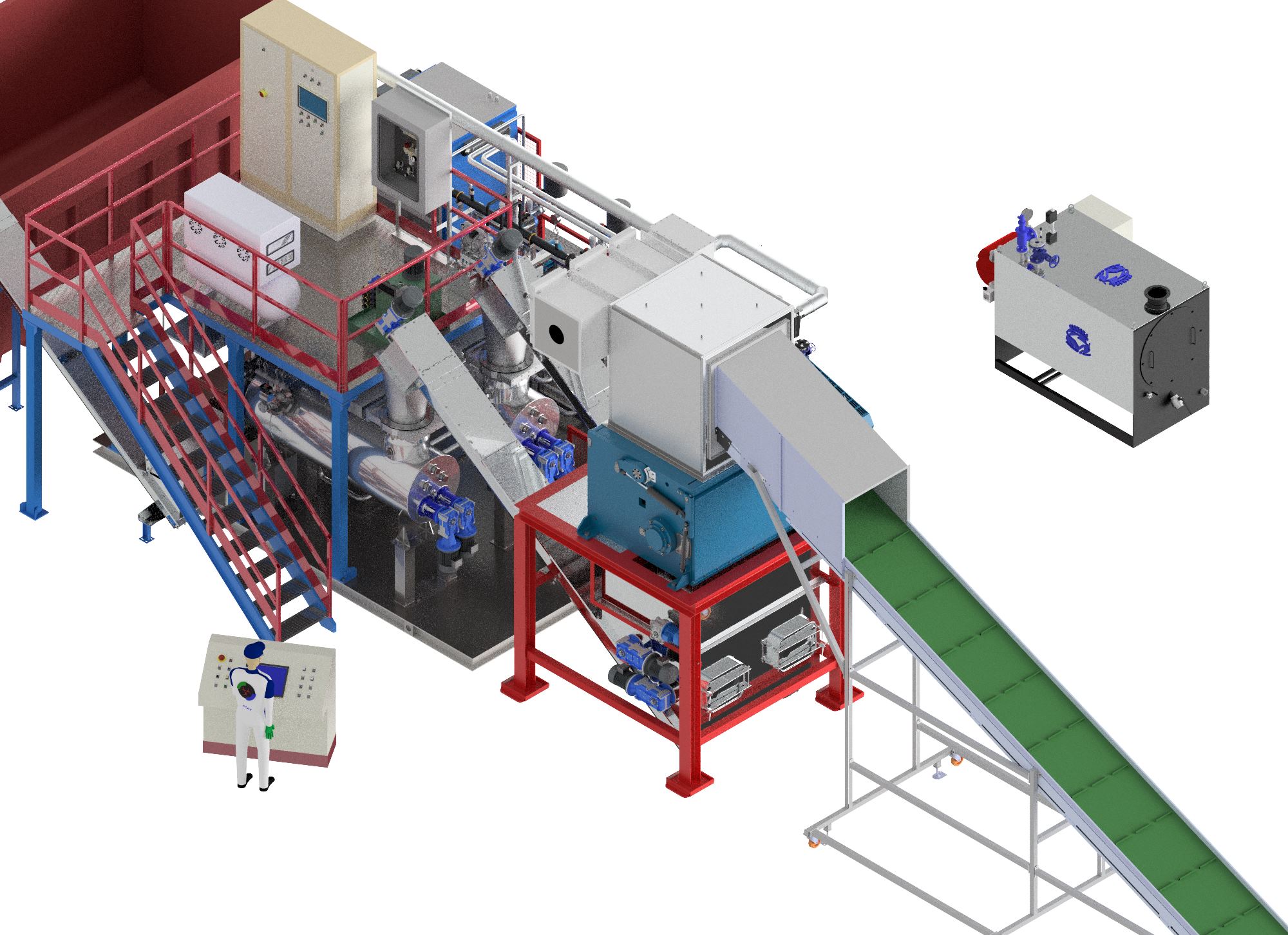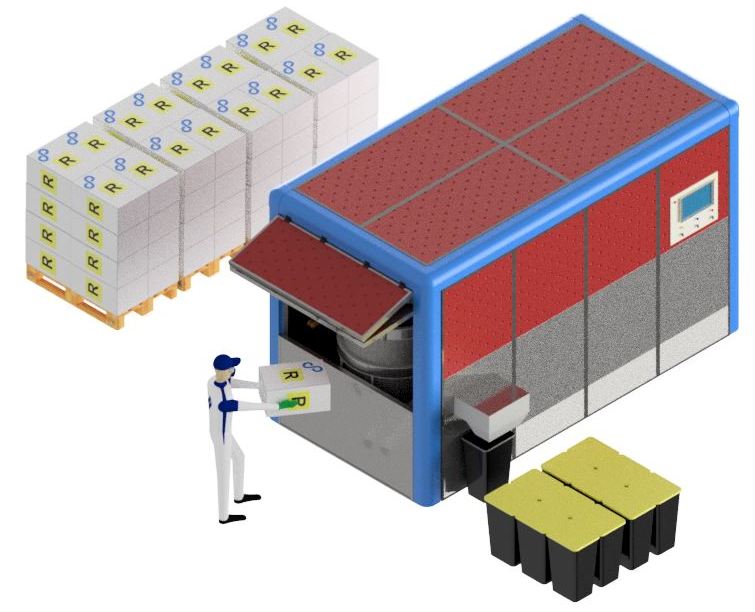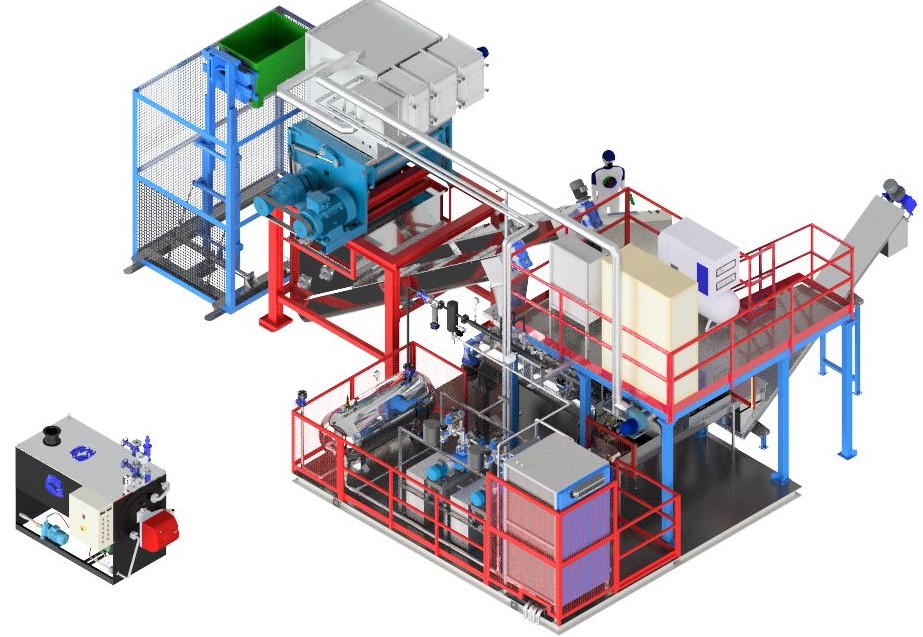Innovative Solutions for a Safer Environment
Biohazard
Infectious risk related to medical waste
After radioactive waste, medical waste is now considered the second most hazardous waste in the world
Potentially infected medical waste is produced daily by health activities, such as: diagnosis, research, treatment of patients, hospitalization, immunisation of human beings or animals… etc. During infectious epidemics, the waste generated increases exponentially, putting a strain on the system as a whole: the producing health organisation, the transporting companies and the collection centres. Therefore, all this must be foreseen in the safety protocols to avoid major infectious impacts. Hence the importance of solving the problem at the place of production by means of sterilisation plants, thus avoiding transport to the outside.
Hospital waste frequently contains pathogens: viruses (such as SARS‑CoV‑2, Ebola), bacteria (E. coli, S. aureus, Klebsiella, etc.) and fungi. They can survive on inanimate objects (provided), representing a potential transmission vehicle

The Role of Infectious Healthcare Waste in the Emergence of Pandemics
The improper management of healthcare waste, especially waste classified as hazardous due to its infectious nature, represents a critical but often underestimated risk factor in the emergence and propagation of infectious diseases. This category includes contaminated personal protective equipment (PPE), sharps, pathological waste, and materials exposed to bodily fluids or infectious agents.
In the absence of rigorous protocols for segregation, containment, transport, and treatment, such waste can serve as a reservoir and transmission vector for pathogens, including viruses, multidrug-resistant organisms, and emerging zoonotic agents. The COVID-19 pandemic exemplified the scale of this challenge, with healthcare systems worldwide generating unprecedented volumes of infectious waste, often surpassing the treatment capacities of existing waste management infrastructure.
Moreover, the accumulation and uncontrolled disposal of infectious medical waste—especially in low-resource or crisis-affected settings—can lead to environmental contamination, occupational exposure among waste handlers, and spillover events involving human or animal populations. These dynamics underscore the need to integrate healthcare waste management into broader frameworks for infection prevention, environmental health, and pandemic preparedness.
Robust, standardized waste handling systems, supported by appropriate regulatory, technological, and logistical mechanisms, are essential not only to prevent localized outbreaks but also to mitigate the risk of future global health emergencies.


Mitigation Strategies for Infectious Healthcare Waste Management
To address the growing threat posed by infectious healthcare waste—particularly in the context of pandemic preparedness—a combination of regulatory, technological, and operational measures must be implemented. Key strategies include:
1: Strengthening Regulatory Frameworks
Comprehensive and enforceable regulations should define waste categorization, segregation protocols, treatment standards, and responsibilities across the healthcare and waste management sectors. Harmonization with international guidelines (e.g., WHO, UNEP, EU regulations) ensures consistency and accountability.
2: On-site Waste Treatment Technologies
The deployment of decentralized treatment systems such as high temperature steam sterilization, microwave disinfection units, and advanced chemical or thermal sterilization technologies allows for immediate and effective treatment at the point of generation, reducing the risk of cross-contamination during transport and storage.
.

